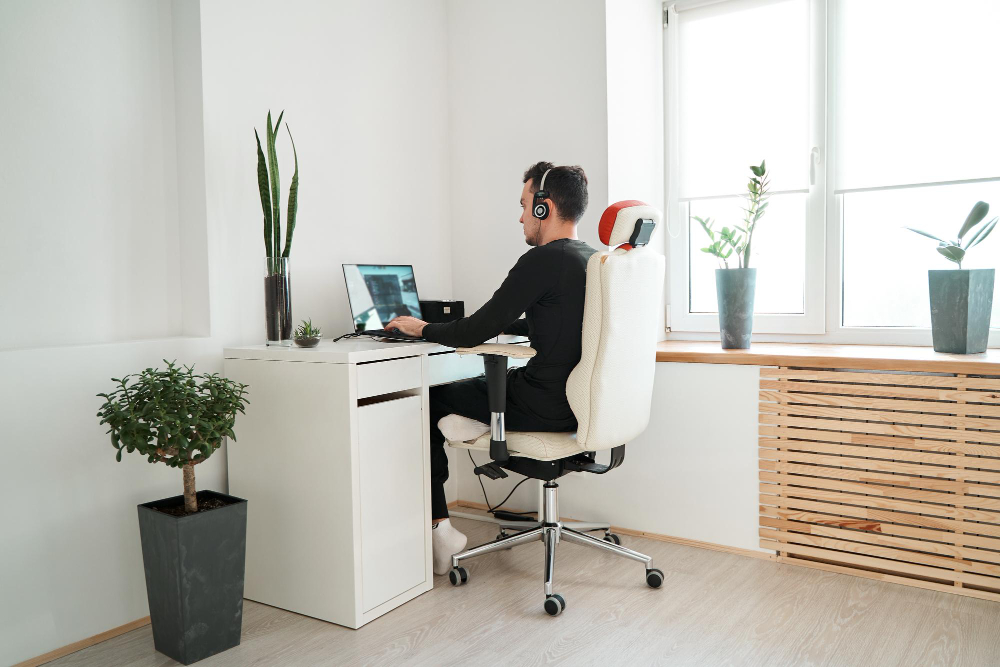The Ultimate Guide to a Spinal-Friendly Workspace

In our fast-paced, digital world, many of us spend the majority of our waking lives in an office setting, hunched over a desk or peering at screens. The toll this takes on our spine and overall health cannot be overstated. Long hours spent in non-ergonomic workspaces can lead to debilitating issues such as back pain, neck strain, and even more severe conditions like herniated discs. If you're in Orlando, FL where you might feel the need for spinal decompression due to such concerns, creating an ergonomic workspace is not just about comfort — it's a crucial investment in your long-term well-being.
Understanding Ergonomics: What It Is and Why It Matters
Ergonomics is the study of people's efficiency in their working environment. It involves the design of workspaces, processes, and equipment to fit the people who use them. A workspace that is not ergonomic can lead to musculoskeletal disorders (MSD) such as pain, tingling, and numbness in various parts of the body. These disorders affect the body’s movement or musculoskeletal system and include conditions such as carpal tunnel syndrome, tendonitis, and fibromyalgia.
The Health Benefits of an Ergonomic Workspace
A well-designed ergonomic workspace can offer a variety of health benefits, including:
- Reduced Back and Neck Pain: Properly positioned ergonomic chairs and desks allow for better posture, reducing the strain on the spine and its supporting muscles.
- Decreased Risk of Injury: Ergonomic design can help prevent repetitive strain injuries and minimize the risk of falls and trips, which can also cause serious spinal damage.
- Enhanced Circulation: By promoting good posture, ergonomic furniture can enhance blood flow and prevent blood clots.
- Improved Productivity: When employees are comfortable, they are happier, and happier employees are more productive.
Designing Your Ergonomic Workspace
Creating an ergonomic workspace is about more than just buying the right kind of chair. It's a comprehensive approach to how your entire workspace is set up.
The Desk and Chair
Your desk and chair are the foundation of your ergonomic environment. Here's what to look for in each:
- Desk: Opt for a desk that allows you to keep your arms close to your body and your wrists straight when typing. Ensure it is at the right height so your feet can rest comfortably on the floor.
- Chair: A high-quality ergonomic chair should have adjustable height, lumbar support, and comfortable padding. It should allow for your feet to be flat on the floor with your knees at a 90-degree angle.
Computer Setup
Your computer setup plays a big role in your ergonomic health as well:
- Monitor: Position your monitor directly in front of you at arm's length, with the top of the screen at or slightly below eye level. This helps prevent neck strain.
- Keyboard and Mouse: A split or contoured keyboard can help maintain a more natural wrist position, while an ergonomic mouse can reduce strain on your wrist and arm.
Lighting
Good lighting is an often-overlooked part of an ergonomic workspace. Poor lighting can cause eye strain, headaches, and exacerbate neck and shoulder tension.
- Natural Light: If possible, position your desk near a window to enjoy natural light, which is easy on the eyes.
- Task Lighting: Use a task light to supplement natural light and avoid harsh overhead lights.
Organizational Tips
A clutter-free and organized workspace contributes to a sense of order and calm, reducing stress and mental strain.
- Cable Management: Keep cables out of the way and organized to prevent trip hazards and reduce visual clutter.
- Storage Solutions: Use proper shelving and storage to keep items you use frequently within arm's reach, eliminating the need to twist or bend awkwardly.
Taking Breaks and Staying Mobile
Even in the most perfectly designed ergonomic workspace, staying in one position for too long can be detrimental to your health. It's crucial to take regular breaks and move around.
The 20-20-20 Rule
Following the 20-20-20 rule can prevent eye strain: every 20 minutes, look at something 20 feet away for 20 seconds.
Incorporating Movement
Simple movements like stretching, walking, or changing positions can do wonders. Stand up, take a short walk, or have a standing meeting if possible.
Additional Tips for a Healthy Workday
Here are some additional tips to incorporate into your workday for maximum spinal health and overall wellness:
- Stay Hydrated: Ensure you drink enough water throughout the day to keep your spinal disks lubricated and healthy.
- Opt For Walking Meetings: Whenever possible, change the routine of seated meetings and have a walking meeting.
- Use Proper Lifting Techniques: If your job involves lifting, ensure you are using your legs and not your back to lift heavy objects.
- Consider Ergonomic Office Accessories: Things like footrests, document holders, and anti-glare screens can further enhance your ergonomic setup.
Conclusion: The Lifelong Benefits of Ergonomics
Creating a spinal-friendly workspace isn't just about avoiding pain in the short term. It's an investment in your long-term health. By making a few simple changes to how you work, you can prevent chronic pain and injury and create a more comfortable and productive environment for yourself. For the residents of Orlando, FL, it's also important to understand that a proactive approach to spinal health can mean all the difference in avoiding more invasive treatments like spinal decompression.
If you do find yourself in need of spinal decompression in Orlando, FL, professionals at Lions Chiropractic & Injury can guide you through the process with expertise and care. But why wait until it's an urgent requirement? Start crafting your ergonomic workspace today, and you'll be amazed at the transformation it can bring to your life both inside and outside the office.